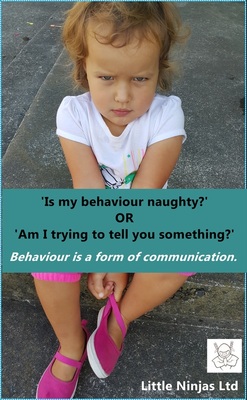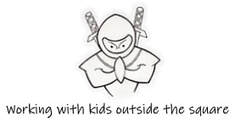 The word naughty is a word that is used frequently to describe behaviour that may not be seen as acceptable. More than often it is used to describe the behaviour of children. We hear phrases such as ‘That is really naughty!’ ‘Stop that, it is naughty!’ ‘You are just being naughty!’ ‘She was so naughty today!’ ‘You are being a naughty girl right now!’ Naughty is a term that seems to be more likely to be used with younger children, yet what do they understand of this word? Children appear this word from a young age and often mimic adults by repeating the it without actually knowing what it means. Over the years the more I have learnt about behaviour, the more I have come to really dislike the word naughty. So what exactly does it mean? After searching a number of dictionaries the most popular definition of the word naughty is ‘(especially of a child) badly behaved; disobedient.’ Looking a little further there was a description of badly behaved in the online Oxford Dictionary. I was really surprised to see words such, ‘disobedient, bad, misbehaved, misbehaving, wayward, defiant, unruly, insubordinate, wilful, self-willed, delinquent, undisciplined, unmanageable, uncontrollable, ungovernable, unbiddable, disorderly, disruptive, mutinous, fractious, refractory, recalcitrant, errant, wild, wicked, obstreperous, difficult, troublesome, awkward, contrary, perverse, attention-seeking, exasperating, incorrigible. Given how often the word naughty is used, many of these words seem like an extreme way to describe children! Perhaps that is half of the problem. It is a very general word which is used in so many different contexts. There are a few issues which I have with the use of the word ‘naughty.’ 1. It is generally used to describe a child rather than their behaviour. 2. Even when it does describe behaviour, it offers a very general description. It does not really give the child an indication of the behaviour you do not approve of. Therefore what do they learn from being called ‘naughty?’ 3. Behaviour is a form of communication – While they may not be communicating their message in the best way, what they are trying communicate may be very valid! 4. Younger children are often exploring their environment. While their behaviour may not always be safe, it does not make it wrong. They are still learning about their environment. So while the word ‘naughty’ is used often, it is not an effective way to change behaviour which should always be our goal. Rather than labelling behaviour, it would be more productive to first try to work out what the child is trying to communicate through their behaviour. Then help to support them to use a more appropriate way of communicating their message or support them to explore their environment safely. Ninja Knowledge - Online Blog
3 Comments
Tina Swann
5/16/2017 08:28:37 pm
I will certainly think twice before using the 'naughty' word again. Thanks for your insights Anita.
Reply
Anastasia LaGuardia
11/29/2021 07:05:27 am
I’m a Born Again Messianic Christian. I know calling a dog or a child “naughty”, “bad”, “disrespectful”, “mean”, “brat” and “evil” is the sin of verbal abuse, the sin of idolatry and the sin of pride.
Reply
11/11/2022 12:35:20 am
Great blog. I appreciate you giving all of this useful information. The information was both quite fascinating and very helpful. Without a doubt, this content is worth to share!
Reply
Leave a Reply. |
AuthorMy name is Anita Johansen. My writing is based on my experience as a Psychologist working with children and families. It is also based on my life experiences including as a mother and wife. Archives
June 2019
Categories
All
|

 RSS Feed
RSS Feed